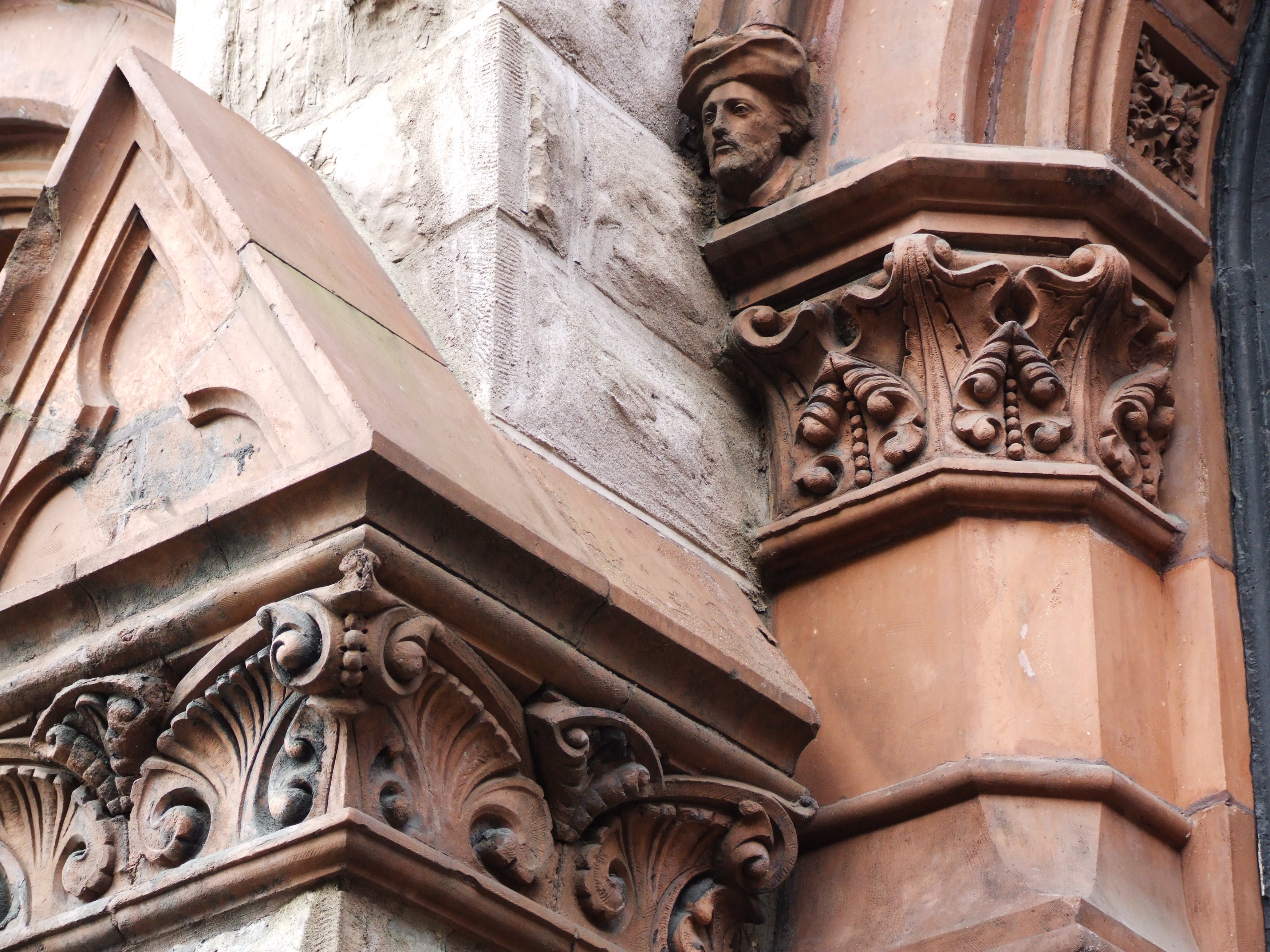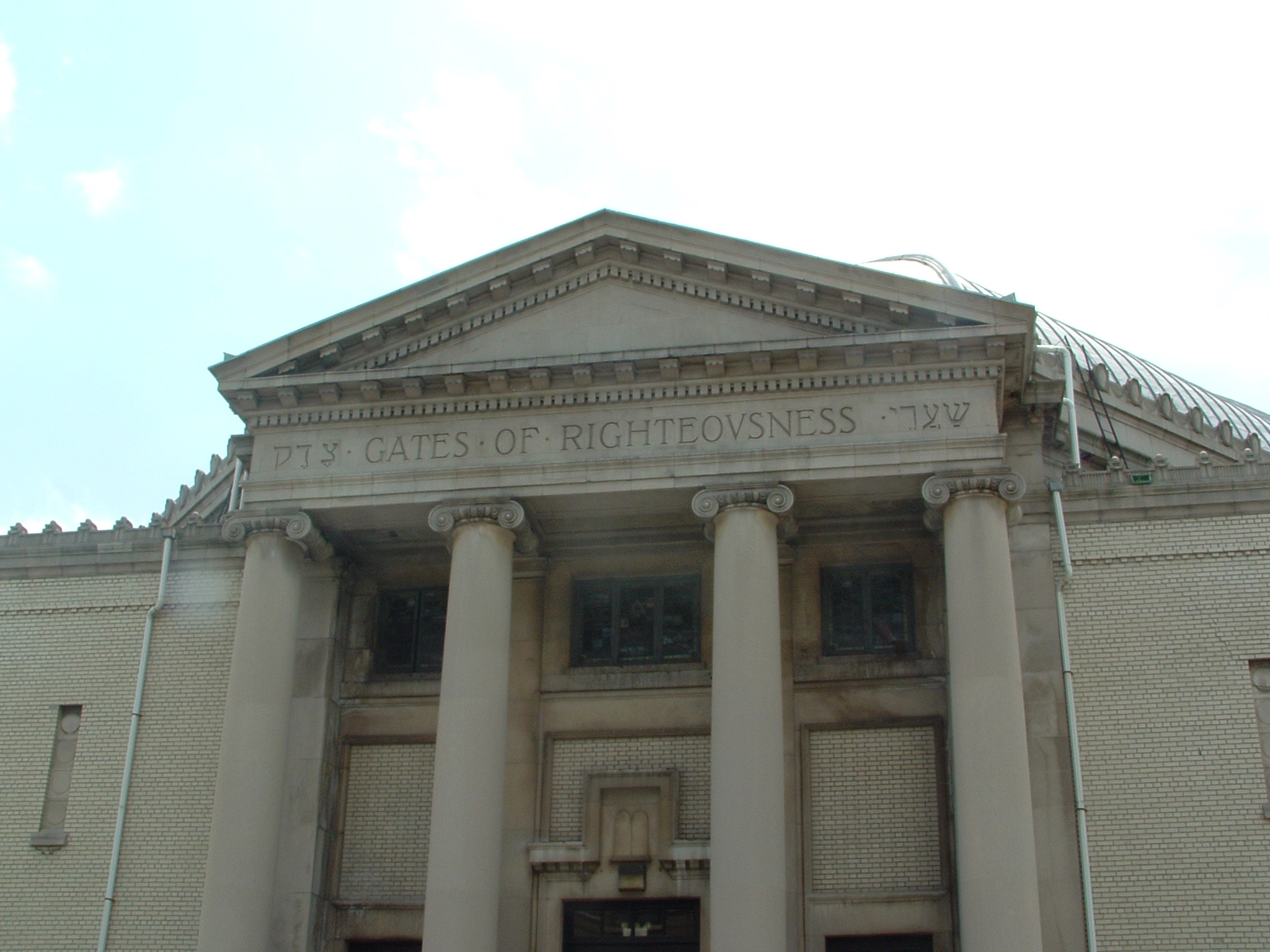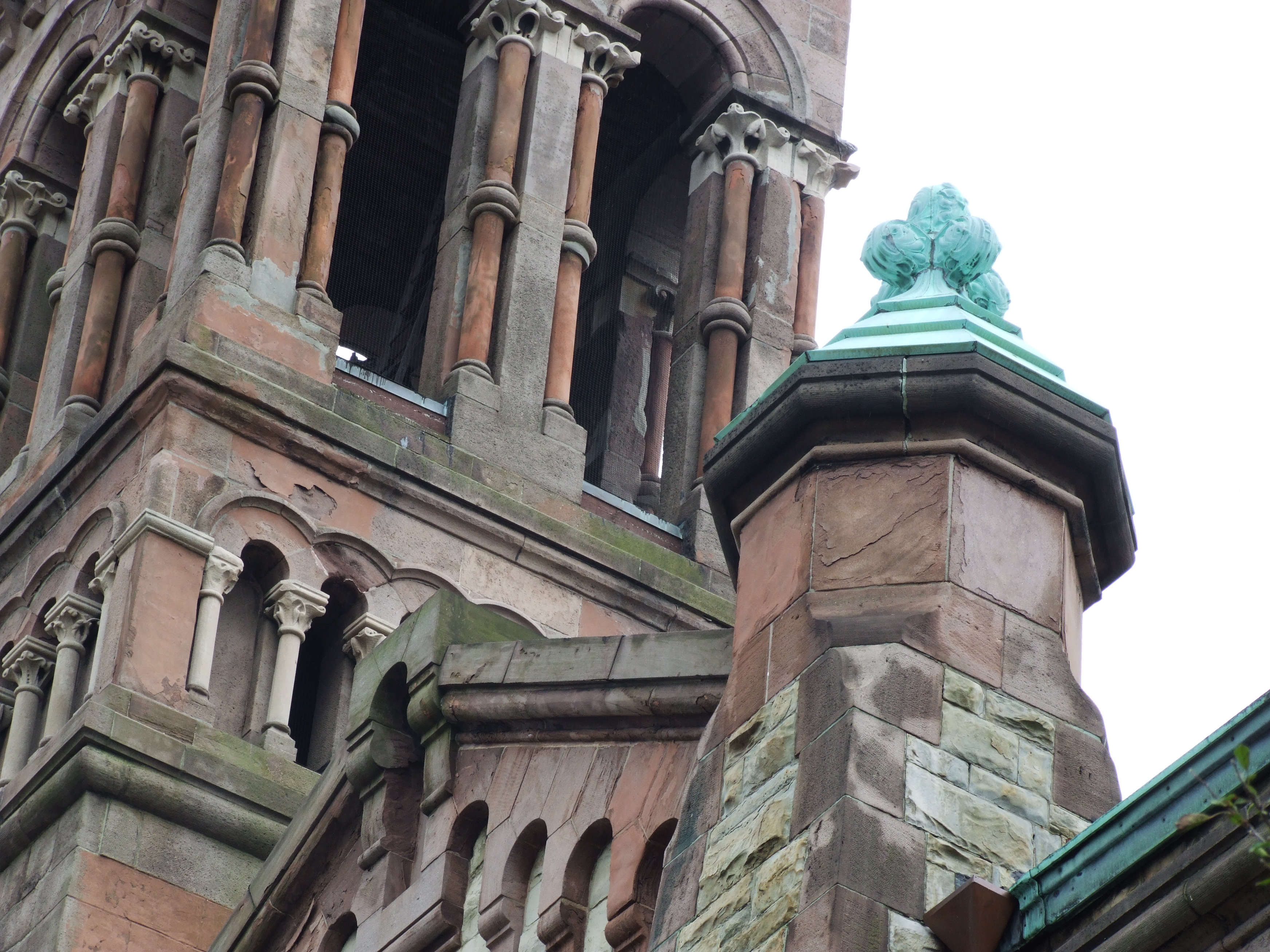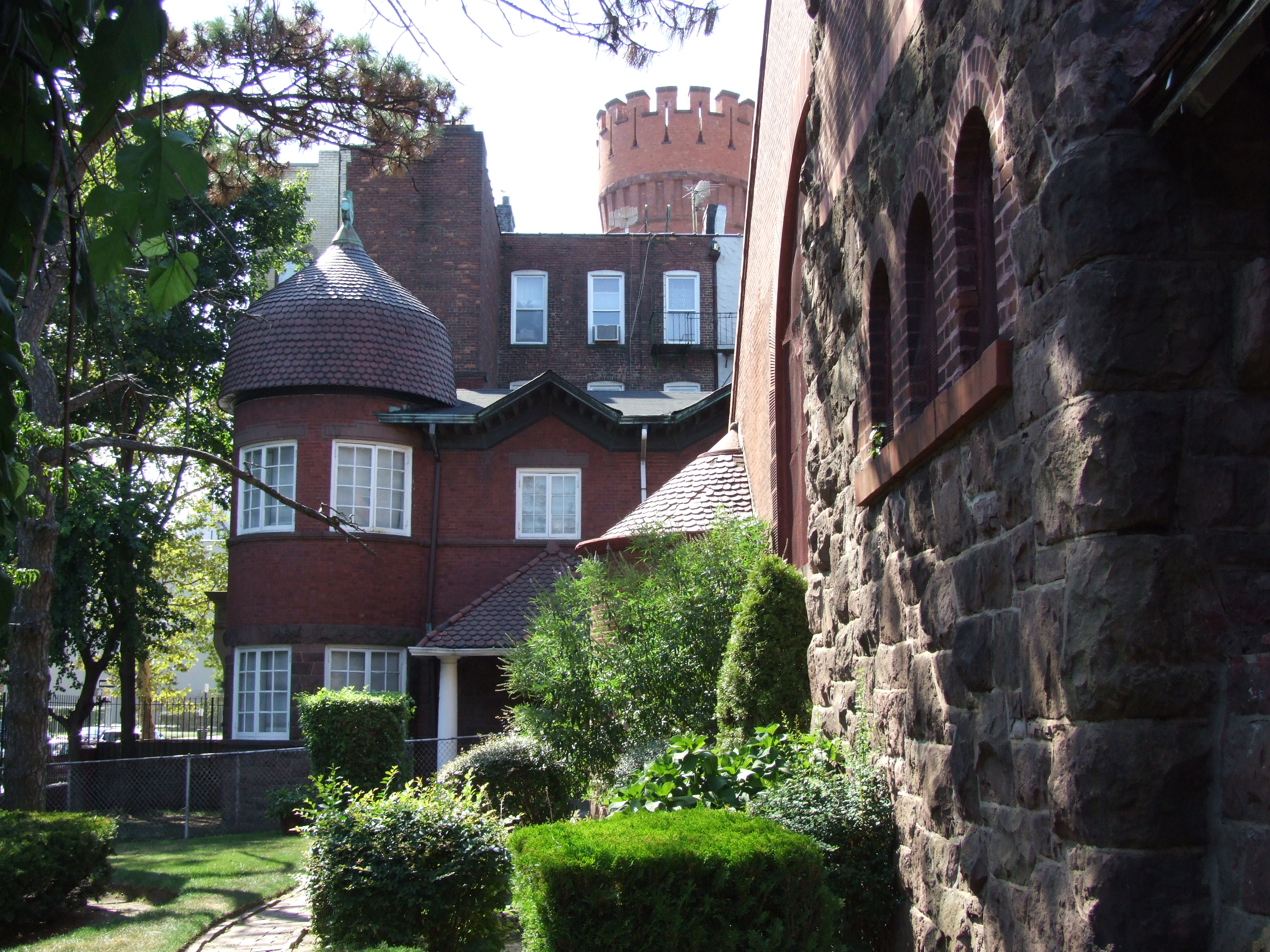Walkabout: Favorite Sacred Spaces
Throughout history, in all cultures, buildings and spaces dedicated to honor and worship a Higher Power or Powers, have been the laboratories for innovation in architecture.

Union United Methodist Church. JC Cady and Co, architects. 1892. New York Ave. Crown Heights North. Former 1st Church of Christ, Scientist at right. Photo by Suzanne Spellen
Throughout history, in all cultures, buildings and spaces dedicated to honor and worship a Higher Power or Powers, have been the laboratories for innovation in architecture. Everything we know as familiar in Western architecture, has been borrowed from the temples of the Greeks and Romans, the mosques of ancient Islam, and the domes of Constantinople.
During the Middle Ages, at a time when most people could not read or write, and majority lived in primitive huts and shelters, the great cathedrals rose, and somehow these people figured out flying buttresses, soaring spaces, elaborate tracery windows, and magnificent stained glass, creating an architectural style that is still copied today.
The Renaissance built upon those innovations, and added the magnificence of the Greco-Roman and Eastern dome, again inventing and perfecting architectural and engineering feats of great ingenuity and beauty. By the time we reach 19th and 20th century Brooklyn, everything is in place for the great churches and temples that grace our streets today.

I haven’t seen, and I certainly haven’t photographed, all of the wonderful houses of worship that exist in Brownstone Brooklyn, not to mention outside of the Brownstone belt.
So my list of favorites is from the parts of Brooklyn that I know well. I used to be a professional choral singer, mostly in Episcopal churches, and have been lucky enough to see the interiors of many beautiful churches all over Brooklyn. Several are featured here.
My neighborhood of Crown Heights North has some of the most beautiful churches and temples in all of Brooklyn, and my entire list of favorites could easily be filled from here.
Some may ask, How could you have left off this church or that temple? This is by no means a complete list, but some favorites that I actually have photos of. Next year, after more exploration with camera in hand, I’ll have an entirely different list.

So, here, on Christmas week, is my list of ten favorite sacred spaces. In the vast Borough of Churches, this is but a drop in the bucket. I purposely chose photographs that highlight those aspects of the individual designs that make these among my favorites. See more, including some interiors, on my Flickr page.
1. St Bartholomew’s Episcopal Church. George P. Chappell, architect. 1886-90. 1227 Pacific Street, between Bedford and Nostrand, Crown Heights North. Style: Arts and Crafts.
2. Union United Methodist Church. J.C.Cady and Co., architects. 1892. 121 New York Ave, between Dean and Bergen, Crown Heights North. Style: Romanesque Revival.
3. Church of St. Luke and St. Matthew Episcopal Church. John Welch, architect. 1888-91. 520 Clinton Ave, between Fulton and Atlantic, Clinton Hill. Style: Romanesque Revival with Gothic polychrome elements. (3 shades of brownstone)
4. Friendship Baptist Church, formerly Kismet Masonic Temple, Architect unknown, 1910. 92 Herkimer St, between Nostrand and Bedford, Bedford Stuyvesant. Style: Moorish Revival.
5. St. Gregory the Great Roman Catholic Church. Frank J. Helmle, architect. 1915. 224 Brooklyn Ave, at St. Johns Pl. Crown Heights North. Style: Early Christian Basilica.
6. Historic First Church of God In Christ, originally Shaare Zedeck Synagogue. Simon Eisentrath and B. Horowitz, architects. 1923. 221 Kingston Ave at Park Place, Crown Heights North. Style: Classical Revival.
7. Grace Methodist Episcopal Church. Parfitt Brothers, architects. 1882-83. 29-35 Seventh Avenue at St Johns Place. Park Slope. Style: Gothic Revival.
8. Emmanuel Baptist Church. Francis H. Kimball, architect. 1882-83.279 Lafayette St, corner St. James. Clinton Hill. Style: French Gothic.
9. Hebron French Speaking Seventh Day Adventist Church, originally First Church of Christ, Scientist. Henry Ives Cobb, architect. 1909. New York Ave at Dean St. Crown Heights North. Style: Byzantine Revival.
10. St Anne and the Holy Trinity Episcopal Church, originally Holy Trinity Church. Minard Lefever, architect. 1844-47. Montague at Clinton St. Brooklyn Heights. Style: English Gothic.



[Photos by Suzanne Spellen]





Minard;
Relax – just having some fun with you. How the hell would I know if you are Sam or not?
Was the cathedral on Troutman the abandoned one? I visited a friend who lived a block away from an abandoned cathedral somewhere in Bushwick a few times in the mid-nineties. It was a pretty spectacular ruin — not that far into Bushwick, either, although I’m not sure where he was, exactly.
I am still obsessed with St. Bart’s, since I am obsessed with the Bedfordshire across the street.
benson, you’re scaring me.
yes, I confess, I am Barbara Corcoran,
actually, I’m Elizabeth Stribling dressing down to pass for Babs.
but no, I am actually Clark Halsted, in drag pretending I am Elizabeth pretending she is Barbara.
But in reality I am none other than the What using cleaner language,
are you e-mailing bxgirl pretending you’re me? if so stop it!
Bxgrl;
There was a whole discussion about this topic on one of the OT’s about one month ago. I don’t remember who participated though (other than myself).
Legion- wasn’t there a discussion of the Princess Bride on the OT not too long ago?
So none of you think it really was babs corcoran testing me to see if I could catch the reference and ergo offer me a well paying job? 😉
benson- who else would think minard and sam were the same?
Minard;
I thought (still think) that you are/were “Sam”. You appeared on the scene at about the same time that “Sam” left it. You have many similarities to “Sam”:
– great admiration and knowledge of old architecture;
– keen on a parking spot for the car, and for central AC, even in old homes;
-keen on Brooklyn Heights;
-not-so-keen about 11217 (the poster);
-similiar good wit, and crisp writing style.
Well, Minard???? Do you want to fess up????
bxgrl,
Inigo Montoya?
I would have used Inigo Jones, considering we’re on
a website related to architecture.
You got me!
My real name is Barbara Corcoran
LOL!
(no it’s not)
well, should i be worried about identity theft? I don’t think old Minard has a very good credit rating
I don’t know either- “babs” referred to him/herself as Inigo Montoya, then minard lafever, then sam.